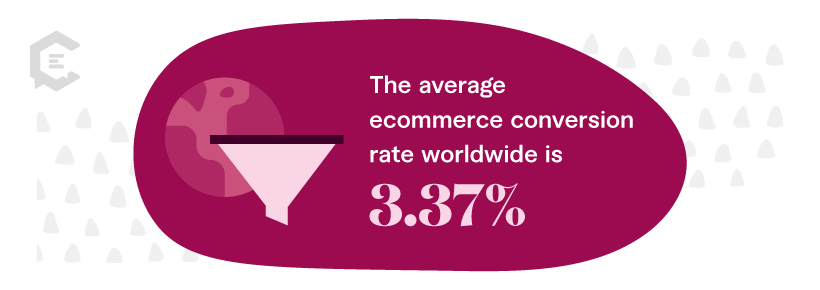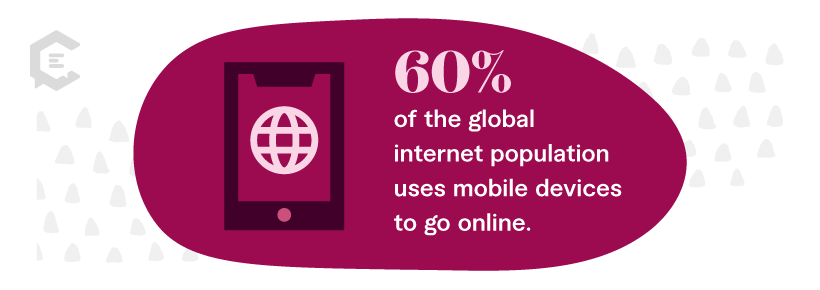Is your e-commerce website generating a lot of traffic but very few sales? Is your subscription-based service facing difficulties converting free trial users into paying customers? Or maybe your landing page generates just a handful of leads despite driving tons of traffic to your website.
Many businesses struggle with conversion, but there are conversion rate optimization (CRO) techniques you can implement so your rates don’t fall below industry averages.
In this guide, we’ll talk about:
- What CRO is and the steps involved
- Best practices to keep in mind
- Top CRO tools and strategies

What is CRO?
In digital marketing, content rate optimization is the practice of enhancing a landing page, website, or digital marketing campaign to increase the number of people performing a desired action. Actions will vary depending on the objective of the website or landing page but can include:
- Downloading a white paper
- Filling out a form
- Signing up for a free trial
- Making a purchase
- Registering for a webinar
The goal is to increase conversion rates, which increases return on investment (ROI).

Why invest in CRO
The average ecommerce conversion rate worldwide is 3.37 percent. For email, that’s anywhere from 2-5 percent. Working toward higher conversion rates offers tremendous benefits, including:
- Increased revenue: More visitors making purchases or signing up for a service means more revenue
- Better ROI: Capturing the most value from existing traffic is more cost-effective than investing in new traffic
- Enhanced user experience (UX): CRO emphasizes user-centric design and content, enhancing the overall user experience
- Increased customer lifetime value: CRO focuses on immediate conversions and improving the overall customer journey
- Competitive advantage: You can outperform competitors by constantly delivering compelling offers and superior UX
- Improved search engine optimization (SEO) performance: CRO addresses SEO factors such as mobile-friendliness and page load speed
- Data-driven insights: CRO relies on testing and data analysis, which provide valuable insights into user preferences and behavior
The CRO Process: A Step-by-Step Overview
CRO is a structured and iterative process that involves the following:
Step 1: Analyzing current conversions and gathering data
You must first know where your landing page or website stands to make improvements. Examine existing data, such as:
- Traffic sources
- User behavior
- Conversion rates
- Device and browser compatibility
- Keyword performance
- User demographics
- Customer engagement metrics
This gives you insights into the strengths and weaknesses of your digital assets.
Step 2: Hypothesis and prioritization
Using the data and insights you now have, hypothesize which changes can result in improvements. This helps you focus on the most impactful changes first.

Step 3: Designing and implementing test scenarios
The next step is implementing A/B or multivariate testing to validate your changes.
- Also known as split testing, A/B testing compares two versions of a website, email, or landing page to determine which better achieves a specific goal. For example, let’s say you’re testing two different headlines to see which has a higher conversion rate. After you test, you find that headline A has a 20% conversion rate vs. headline B, which has a 50% conversion rate. You would then use that testing to make adjustments to your headlines moving forward.
- Multivariate testing tests multiple variables simultaneously — unlike A/B testing, which tests just one or a few elements of a digital asset at a time. For example, testing the variations of images, headlines, and call-to-action (CTA) buttons to find the best combination.
Step 4: Evaluating results and iteration
Did the changes have a positive, negative, or negligible impact on conversion rates? You can implement successful changes permanently. But keep in mind that what works today may not work tomorrow. So, be ready to continue testing and iterating over time.
Best Practices for Effective CRO
CRO involves a lot of moving parts. Follow these best practices to make the most of it:
Align CRO with business goals
Ensure your CRO efforts contribute directly to your company’s overarching goals. This means designing every campaign or website change to achieve specific business outcomes.
When you align CRO with business objectives, you can:
- Allocate budget, time, and workforce more efficiently
- Create key performance indicators (KPIs) to measure the success of your CRO efforts. KPIs also provide benchmarks for ongoing optimization
- Adapt your CRO strategy as your business objectives evolve
Emphasize UX
Tailor your CRO strategy to address customer preferences, pain points, and behavior patterns. This means:
- Making it easy for users to find what they need on your website
- Implementing page optimization techniques such as image compression to improve load speed
- Designing clear, prominent CTAs
Using content as a conversion driver
Create content that informs, engages, and encourages users to perform specific actions. Apply strategies such as:
- Creating compelling copy that incorporates visuals and storytelling
- Using targeted content promotion to reach users who are more likely to convert
- Leveraging data and user feedback to improve the converting power of your content and CTAs

Implementing mobile-friendly design
More than 60 percent of the global internet population uses mobile devices to go online — a substantial user demographic, making mobile CRO extremely important. Strategies you can implement include:
- Ensuring your website renders well on any screen size
- Optimizing images and leveraging browser caching to improve mobile load times
- Sizing your CTA and other buttons appropriately
- Making forms easy to fill out
Tools and Technologies in CRO
CRO uses various tools and technologies to test, analyze, and optimize digital assets effectively. These include:
A/B testing platforms
A/B testing, a core foundation of CRO, offers the necessary data and insights to make decisions based on real user behavior and preferences.
Popular A/B testing platforms include:

Heatmaps and session recording tools
These tools provide visual insights (graphical data representations) that shed light on where users click, how they navigate your website, and how far they scroll.
Heatmaps use color gradients to emphasize areas with high and low user engagement. They come in various types: click heatmaps, move heatmaps, and scroll heatmaps.
Session recording tools record individual user sessions on your website, letting you witness user interactions in real-time.
Popular heat mapping and session recording tools include:
Conversion analytics platforms
These platforms let you view what users do on your website or landing page. They provide data such as click-through rates, conversion rates, bounce rates, and user demographics. They show which pages generate the most visits, which CTA buttons users click, and the steps they take from initial interaction to conversion.
Popular conversion analytics tools include:
Emerging Trends in CRO
CRO is a dynamic, continually evolving field that adapts to changing user expectations and new technologies. Here are some trends we see shaping the future of CRO and digital marketing.
The convergence of artificial intelligence (AI) and CRO
AI algorithms can process and analyze vast volumes of user data. They enhance CRO effectiveness in several ways:
- Uncover trends and patterns in user behavior that are easy to miss using manual analysis
- Predict user behavior based on historical data
- Tailor offers and content to individual users in real-time
- Automate testing processes to rapidly test various web elements
- Empower businesses to continuously refine their CRO strategies based on real-time data

Personalization and targeted conversion paths
Personalization customizes user journeys, recommendations, content, and CTAs based on individual user data. Targeted conversion paths guide individual users or user segments toward a specific conversion goal.
For CRO, this means:
- Personalization extending across multiple channels seamlessly
- Voice-activated chatbots and devices offering personalized responses and recommendations
- Standardization of strategies that focus on ethical, privacy-first personalization
- Individualized pricing, custom navigation menus, and unique product suggestions
- Virtual environments offering tailored content and interactions to personalize user experiences
Voice search and CRO dynamics
Voice search adoption is increasing, and it’s changing the way users interact with digital devices. This has unique implications for CRO.
- Voice search queries are longer and more conversational. Optimize content and keywords accordingly
- Voice assistants draw from featured snippets to provide answers to voice queries. Optimize for Position Zero to capture voice search traffic
- Voice searches often happen on mobile devices, and they typically have local intent. Prioritize mobile optimization and local SEO
CRO is Evolving — And So Should You
CRO is constantly changing. Thriving in this highly competitive field entails three things: embracing new technologies, understanding evolving user behaviors, and continually enhancing user experiences.
Need help improving your content conversion rates? Speak with a ClearVoice content strategist today and discover more about our flexible content solutions.



